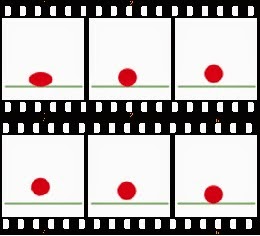ANIMATION IS THE PROCESS OF CREATING MOTION AND SHAPE
CHANGE ILLUSION BY MEANS OF THE RAPID DISPLAY OF A SEQUENCE
OF STATIC IMAGES THAT MINIMALLY DIFFER FROM EACH OTHER. THE
ILLUSION—AS IN MOTION PICTURES IN GENERAL—IS THOUGHT TO
RELY ON THE PHI PHENOMENON. ANIMATORS ARE ARTISTS WHO
SPECIALIZE IN THE CREATION OF ANIMATION.
ANIMATIONS CAN BE RECORDED ON EITHER ANALOGUE MEDIA, SUCH
AS A FLIP BOOK, MOTIO PICTURE FILM, VIDEO TAPE, OR ON DIGITAL
MEDIA, INCLUDING FORMATS SUCH AS ANIMATED GIF, FLASH
ANIMATION OR DIGITAL VIDEO. TO DISPLAY ANIMATION, A DIGITAL
CAMERA, COMPUTER, OR PROJECTOR ARE USED ALONG WITH NEW
TECHNOLOGIES THAT ARE PRODUCED.
ANIMATION CREATION METHODS INCLUDE THE TRADITIONAL
ANIMATION CREATION METHOD AND THOSE INVOLVING STOP MOTION
ANIMATION OF TWO AND THREE-DIMENSIONAL OBJECTS, SUCH
AS PAPER CUTOUTS, PUPPETS AND CLAY FIGURES. IMAGES ARE
DISPLAYED IN A RAPID SUCCESSION, USUALLY 24, 25, 30, OR 60
FRAMES PER SECOND.
MANY TV SHOWS TODAY USE ANIMATION AND ANIMATION GIVES
THEM THAT MORE OF A UNIQUE LOOK, ALLOWING THEM TO DO MORE
THAN WHAT THEY COULD DO WITH ACTORS.










